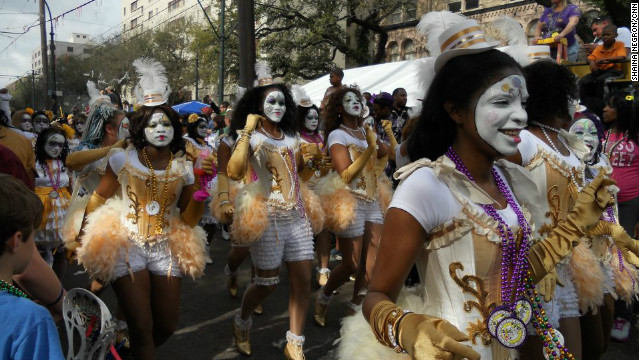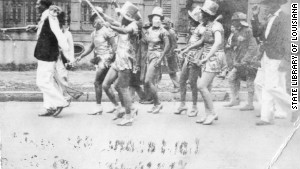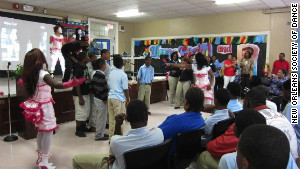From the day two dancing puppets named
Tan Tan and Saga Boy made their debut on the Savannah stage in
Port-of-Spain, not a Carnival has passed without a band that had skirts, pants, frills or capes constructed by Lachmin Rampersad.
She is the go-to-seamstress from Annandale, Demerara-Mahaica, Guyana, who saves the day for mas bands offering masqueraders more than a slice of lycra as a costume.
And she’s often at the ready and to the rescue for last-minute stitching tasks and adjustments as she offers bandleaders an efficient production factory that upholds fairly high standards in quality control. But she is not the cheap labour that is in abundance in China.
Nike, Apple Computer and former US presidential candidate Mitt Romney, have each recently waged battle against allegations of connections with sweatshop labour in China. Contemporary fashion retailers Sean P Diddy Combs and Tommy Hilfiger recently endured damaging headlines around their labels allegedly employing unsafe factories in Honduras and Bangladesh, respectively.
According to a March 2012 ABC News report, 29 workers were killed in a hazardous factory that produced clothing for Gap and Tommy Hilfiger’s brand.
 |
Lachmin Rampersad with her employees
in her sewing factory
in central Trinidad. photo : SEAN DRAKES |
Trinidad’s mas bands, and its leading fashion retailers, who support factories in China with handsome garment construction orders, have avoided such unfavourable affiliation.
According to Rampersad, there isn’t an association for garment construction factories in Trinidad, nor is there a checks and balance system for the remaining factories like hers. But she’s adamant about making suitable provisions, since she was once a stitcher who worked eight-hour shifts.
No sweat house
“My place is air conditioned,” says Rampersad, “I feel if somebody is not comfortable, they cannot work. If there is not proper ventilation, you will start to get tired. It’s a poor way of having people to work.”
Her nondescript factory site has sat along a busy road in central Trinidad for the last 22 years. Her low-key persona by no means suggests she’s underprepared for hazards. “I’ve never had to deal with those things. I have tanks should water go. If current goes, everybody goes out in the cool until it returns. If current not coming back on, we tell them to go home, unless we have something to stitch by hand.”
And should there be an emergency, there are four unobstructed exits for her staff of 35 to exit the 40-foot by 60-foot building.
The conveniences offered in most modern offices are staples in her factory. Employees have use of a cooler, microwave and fridge. But the most adored provision is the compassion Rampersad, 59, showers on her staff.
“I tell the workers if you feel hungry, take a five minutes, go eat, because if you get sick, it’s worse. Sometimes you don’t know if someone didn’t eat at home.”
“Our people are paid properly. After 4 pm, they get time-and-a-half and they get a meal.”
Continued on Page 5
From Page 4
The transparency around working conditions that Rampersad affords her customers has not exactly deterred clients from taking their business to China. Nonetheless, she is committed to nurturing her community in times when there are fewer and fewer options for young people.
“Everybody in my factory is over 18. You don’t get young people to come in to work even as apprentices, because of CEPEP and On-the-Job Training (OJT). Nobody wants to learn the garment industry,” laments Rampersad.
“There’s no provision for that. It have (sic) Servol, but they have to pay to go there. People in the poorer bracket, they can’t afford that. You have people who have the passion for it, most of them if they have the passion for it, then I train them. As long as they are willing to do it, we will get there.
“I have never had to fire nobody. If somebody come into the work and I know they are stressing me out, I say, Lord, you work it out. To fire somebody…I can’t do that.” Her daughter Stacy injects, “They leave at their own will.”
“And when they gone, (sic),” adds Rampersad, “I say, Lord, thank you for helping with that one.”
Fortified by faith
Rampersad is a traditionalist who takes accountability seriously; she’s also a woman of strong faith. The fourth of five sisters and two brothers, she migrated to Trinidad in 1978 at the age of 25, after just two visits. An introduction that turned romantic inspired her sudden relocation. She was part of a church group.
“We came across, stayed for two weeks; his father was in the Trinidad group.”
She is referring to Chankalal Rampersad, the dashing truck driver she met on that trip and stayed in contact with via handwritten letters.
In Guyana, she worked as a stitcher. Soon she was designing trousers, shirts and uniforms. Her daily stitching quota was 100 pieces.
“We did it in parts, somebody would do the pocket, somebody would sew up the sides. We used to work for $25 a day.”
That rate was bumped to $30 after one year of service. Rampersad credits her versatility and for quickly landing a position with Spartan industries in Trinidad.
“After I had my first child, I decide to stay home,” she explains.
Her husband “wasn’t getting enough work,” so she bought a sewing machine, and an entrepreneur was born. She went door to door seeking newborns to clothe with baby vests (kazacks) made of jersey. “One neighbour would order a dozen. Money was small then, I put a small markup. Sometimes I could sew 100 in eight hours,” recalls Rampersad.
While other women collected handbags and shoes, she fancied sewing machines, and acquired six in five years.
She hired and trained her first employee six months into her new home-business; just stitching baby vests.
“When she go home (sic), I used the machine in the evening.”
The drawing room was at capacity with ten machines by the time they broke ground on a neighbouring lot. Banks wouldn’t give her a loan back then, so she used savings of just under $20,000 to build a simple 20-foot x 40-foot concrete brick production space. Word-of-mouth served to build the Rampersad’s small business, and continues to be the only form of advertising their business relies on.
Crowning glory
Her biggest honour was constructing the spirals and musical notes for costumes by Peter Minshall that appeared in the opening and closing ceremonies of the 1996 Olympic Games. Soon, her clients included Legends, Brian MacFarlane, Alyson Brown. And she’s done “some work for Peter Elias.”
“I work for Rosalind Gabriel two years now, I do little stuff for Tribe,” adds Rampersad.
“I work last year for K2K, (on about 50 per cent of the band), but this year they went China.”
(For accuracy, she did work on a few elements of K2K’s 2013 presentation. By press time, bandleaders did not respond to our request for comment on aspects of manufacturing.)
“If everything goes to China, ten years from now, what will happen to T&T? It’s revenue going out, nothing coming in.”
Government minimum wage is $12.50 an hour.
“My staff don’t work for $12.50 an hour, they work for much more than that,” stated Rampersad. “I know quite a few huge factories that went out of business, they had more than 100 employees. Everybody bringing in 40-foot trailer from China.”
School uniforms are the bread and butter for the remaining garment construction factories, but that work is also going to China.
“After school uniforms, what next?” she wonders.
Rampersad’s stellar reputation provides steady business for uniform and mas construction, and she isn’t bothered by requests to adjust costumes made in China. She continues to produce baby vests, which retail for $7 each. “Right now I export these to Barbados, Grenada, Guyana and Tobago,” she explained. “My label goes on it. Most of them is (sic) wholesale.”
While she strives to do her part to create jobs, she prays for government intervention in the form of incentives for mas bands to manufacture more mas locally. The local workforce, she says, “is losing out to the culture. The only thing driving them (mas bands) to China is the cost.”



 Trinidad and Tobago Carnival 2013: Caribbean's Biggest Party
Trinidad and Tobago Carnival 2013: Caribbean's Biggest Party Trinidad carnival revelers beware: photos could land you in legal trouble
Trinidad carnival revelers beware: photos could land you in legal trouble Milestone: Children Feeding Their Playtime "Baby"
Milestone: Children Feeding Their Playtime "Baby" African-American tradition returns to Carnival
African-American tradition returns to Carnival African-American 'baby doll' tradition returns to Carnival in New Orleans
African-American 'baby doll' tradition returns to Carnival in New Orleans A modern celebration of African-American history
A modern celebration of African-American history